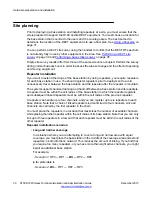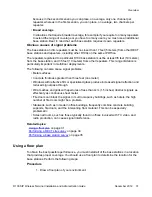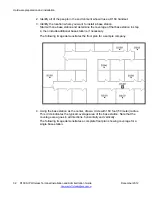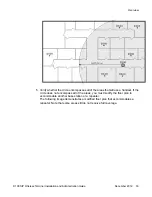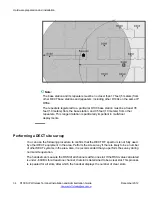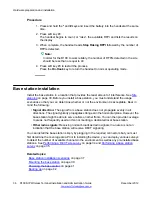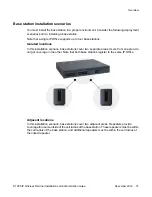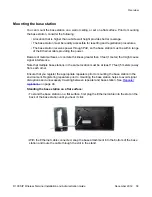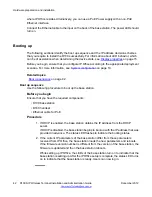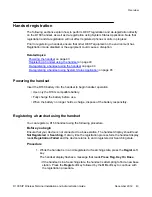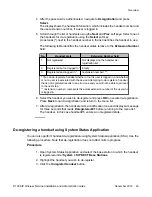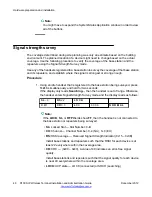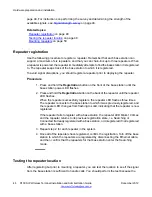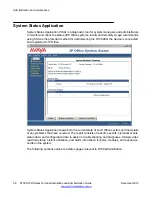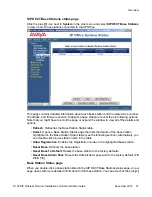
where IP Office resides. Alternatively, you can use a PoE Power supply with a non-PoE
Ethernet interface.
Connect the Ethernet cable to the input on the back of the base station. The power LED should
turn on.
Booting up
The following sections identify the boot up sequence and the IP address decision schemes
that you require to install the D100 successfully. For information about LED behavior, which
can be of assistance when determining the device state, see
Before you begin, ensure that you configure IP Office according to the appropriate deployment
scenario. For more information, see
on page 19.
Related topics:
Boot up sequence
Use the following procedure to boot up the base station.
Before you begin
Ensure that you have the required components:
• D100 base station
• D160 handset
• Ethernet cable for PoE
Procedure
1. If DHCP is enabled, the base station obtains the IP address from the DHCP
server.
If DHCP is disabled, the base station begins to boot up with the IP address that was
provided in advance. The status LED flashes to indicate the booting status.
2. If the current IP parameters of the base station differ from those parameters
received from IP Office, the base station loads the new parameters and reboots.
If the firmware version number is different from the version of the base station, the
firmware is updated and then the base station reboots.
While setting up IP Office, the LEDs of the base station turn on to indicate that the
base station is setting up. After the IP Office setup is complete, the status LED turns
on to indicate that the base station is ready. Users can now log in.
Hardware preparation and installation
42 D100 SIP Wireless Terminal Installation and Administration Guide
December 2012



